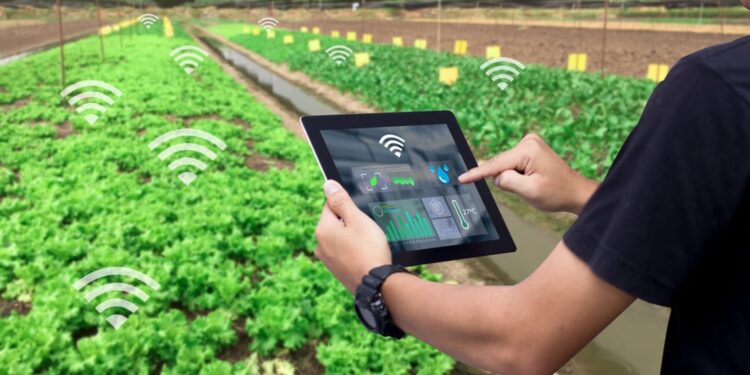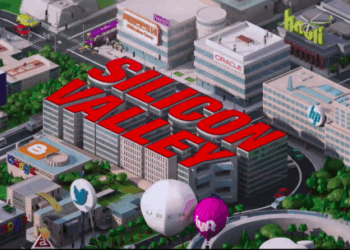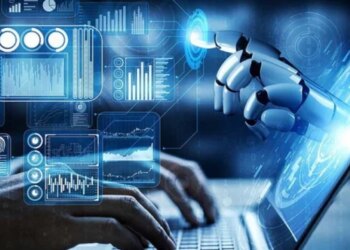The global agricultural landscape is undergoing a revolutionary transformation, moving beyond traditional methods to embrace an era of smart farming. Driven by advanced technologies, data-driven insights, and the power of Artificial Intelligence (AI), this paradigm shift promises to deliver unprecedented efficiency, sustainability, and productivity in food production. As the world population continues to grow, and climate change presents new challenges, smart farming innovations are not just beneficial; they are essential for securing future food abundance. This comprehensive article delves into the intricate world of smart farming, dissecting its core technological components, the profound benefits it delivers, the significant challenges it faces, and the exciting future it promises for feeding the planet.
Defining Smart Farming in the Modern Era
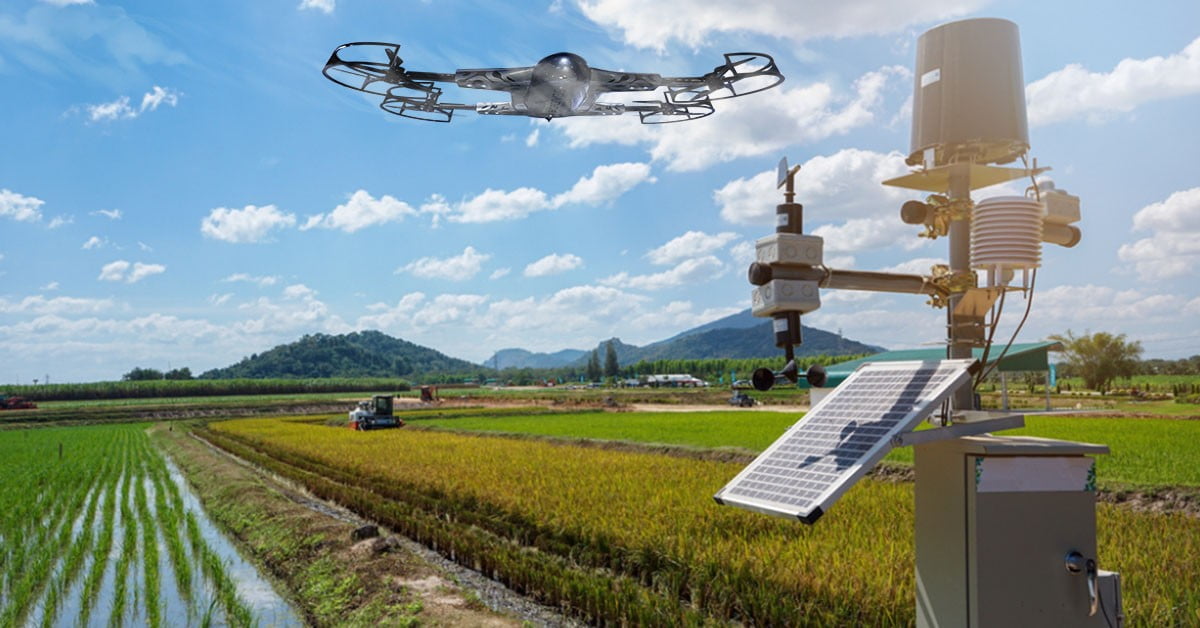
Smart farming, often referred to as precision agriculture or digital agriculture, is an approach to farm management that uses modern information and communication technologies (ICTs) to increase the quantity and quality of agricultural products while optimizing human labor. It’s about making data-informed decisions at every stage of the farming process, moving from broad-acre applications to highly localized, precise interventions.
A. Internet of Things (IoT) Sensors: These are the “eyes and ears” of smart farming, deployed across fields, livestock, and machinery to collect real-time data. Key IoT applications include:
- Soil Sensors: Measure moisture levels, nutrient content (nitrogen, phosphorus, potassium), pH, and temperature.
- Weather Stations: Provide hyper-local data on air temperature, humidity, rainfall, wind speed, and solar radiation.
- Crop Sensors (Proximal and Remote): Proximal sensors are handheld or mounted on machinery to measure plant health (e.g., chlorophyll content). Remote sensors (from drones or satellites) provide broader insights into crop vigor, growth stages, and stress indicators.
- Livestock Wearables/Sensors: Monitor animal health (body temperature, heart rate), activity levels, estrus cycles, and feeding patterns.
- Equipment Sensors: Track the performance, fuel consumption, and location of farm machinery.
B. Data Analytics and Artificial Intelligence (AI): Raw data from sensors is transformed into actionable intelligence through advanced analytics and AI algorithms.
- Machine Learning (ML): Algorithms learn from historical and real-time data to predict crop yields, disease outbreaks, pest infestations, and optimal irrigation schedules.
- Computer Vision: Used in drones and robots for precise weed detection, crop maturity assessment, and identifying individual plant health issues.
- Predictive Modeling: AI models analyze vast datasets to forecast future conditions, such as ideal planting times or potential disease spread.
- Decision Support Systems: AI provides farmers with concrete recommendations based on analyzed data, enabling precise interventions.
C. Connectivity and Communication Technologies: Robust networks are essential for transmitting the enormous volume of data generated on farms.
- 5G and LPWAN (Low Power Wide Area Networks): Provide high-speed and long-range connectivity, respectively, crucial for large farms where traditional Wi-Fi is insufficient.
- Satellite Communication: Ensures connectivity in remote agricultural areas lacking terrestrial broadband.
- Cloud Computing: Stores and processes vast datasets, providing scalable computing power for AI analytics.
D. Automation and Robotics: Physical machinery and vehicles equipped with intelligence to perform tasks autonomously or with minimal human intervention.
- Autonomous Tractors and Harvesters: Self-driving farm machinery can operate 24/7 with high precision, reducing labor costs and optimizing fuel use.
- Drones (UAVs – Unmanned Aerial Vehicles): Used for aerial scouting, precise spraying of pesticides or fertilizers, planting, and mapping.
- Robotic Harvesters: Specialized robots designed to pick delicate fruits and vegetables with precision and minimal damage.
- Weeding Robots: Identify and remove weeds mechanically or with targeted micro-sprays, reducing herbicide use.
E. Geographic Information Systems (GIS) and GPS: Fundamental for precision mapping and localized management.
- GPS-Guided Machinery: Enables tractors and sprayers to follow precise paths, minimizing overlap and skips, saving inputs.
- Variable Rate Technology (VRT): Based on GIS maps and sensor data, VRT allows for precise application of inputs (seeds, fertilizer, water) only where and when needed.
- Field Mapping: Creates detailed maps of soil characteristics, yield variations, and topography.
Key Pillars of Smart Farming Innovation
The application of these technologies manifests across various crucial areas of agricultural practice, making farming more efficient and sustainable.
Precision Crop Management
This is about treating each square meter of a field individually rather than as a uniform block.
- Variable Rate Seeding: Adjusts seed density based on soil type, nutrient levels, and historical yield data in different parts of the field.
- Intelligent Irrigation Systems: Sensors monitor soil moisture and weather forecasts, triggering irrigation only when and where necessary, conserving water. AI can predict optimal watering times.
- Nutrient Management (Variable Rate Fertilization): Soil and crop sensors guide the precise application of fertilizers, delivering specific nutrients to specific areas of the field, reducing overuse and runoff.
- Pest and Disease Detection: Drones with multispectral cameras and AI can identify early signs of pest infestations or disease outbreaks across large areas, enabling targeted, localized treatment.
- Automated Weeding: Robots equipped with computer vision can distinguish between crops and weeds, performing mechanical weeding or highly targeted herbicide application, drastically reducing chemical use.
Smart Livestock Management
Technology is transforming animal husbandry, improving animal welfare and productivity.
- Individual Animal Monitoring: Wearable sensors on animals track health metrics (temperature, heart rate, respiration), activity levels, and reproductive cycles, alerting farmers to potential issues or optimal breeding times.
- Automated Feeding Systems: Deliver precise amounts of feed to individual animals based on their specific needs, optimizing nutrition and reducing waste.
- Robotic Milking: Autonomous robotic milkers allow cows to be milked on demand, improving animal comfort and milk yield.
- Health and Behavior Tracking: AI analyzes data from sensors to detect changes in animal behavior that could indicate illness, stress, or lameness, allowing for early intervention.
- Herd Management: Drones and fixed cameras with AI can monitor large herds, count animals, and identify individuals for specific treatment.
Autonomous Farm Operations
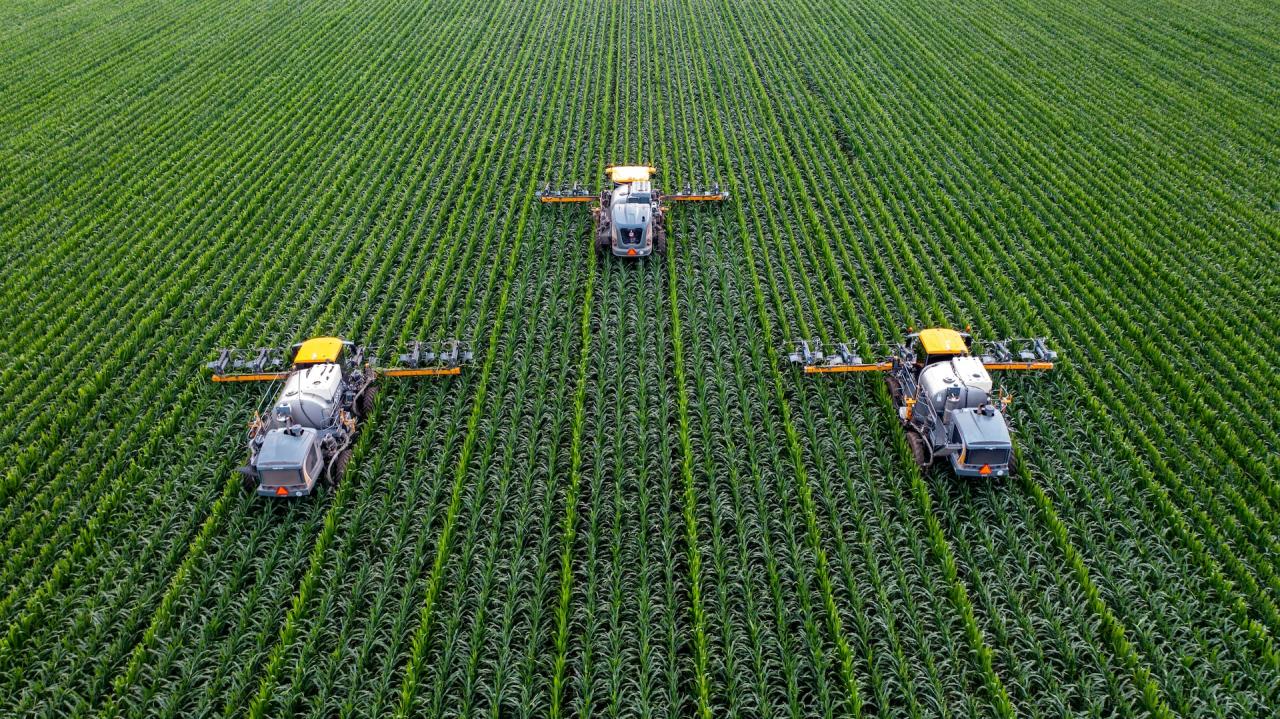
Robots and self-driving machinery are redefining labor on the farm.
- Autonomous Tractors and Sprayers: Perform tasks like plowing, planting, spraying, and harvesting with extreme precision and without human intervention in the driver’s seat. They can work around the clock.
- Automated Harvesting Robots: Specially designed robots can pick delicate crops like strawberries or tomatoes, reducing labor costs and minimizing damage.
- Drone-Based Spraying and Scouting: UAVs can cover vast fields quickly, applying pesticides or nutrients with pinpoint accuracy, or conducting aerial surveys for crop health.
- Robotic Planters: Precisely place seeds at optimal depths and spacings, maximizing germination rates.
Farm Management and Data Integration
The central nervous system of smart farming.
- Integrated Farm Management Platforms: Software dashboards consolidate data from all sensors, machinery, and external sources (weather, market prices) into a single, intuitive interface.
- Yield Mapping: Combines GPS data with harvest yields to create detailed maps showing variations in productivity across fields, informing future planting and management decisions.
- Supply Chain Optimization: Tracking produce from farm to fork ensures transparency, reduces waste, and optimizes logistics.
- Predictive Analytics for Business: AI can forecast market trends, commodity prices, and optimal sales timing, helping farmers make better financial decisions.
The Transformative Benefits of Smart Farming
The widespread adoption of smart farming technologies offers a multitude of advantages that are crucial for the future of food production and global sustainability.
A. Increased Yields and Productivity:
- Optimized Resource Use: Precision application of water, fertilizer, and pesticides ensures that crops receive exactly what they need, when they need it, leading to healthier plants and higher yields.
- Reduced Crop Loss: Early detection of pests, diseases, and environmental stressors minimizes crop damage and spoilage.
- Efficient Operations: Autonomous machinery works continuously and precisely, increasing the amount of work done per unit of time.
B. Enhanced Sustainability and Environmental Protection:
- Reduced Water Usage: Intelligent irrigation systems can cut water consumption by 20-50% by applying water only where needed.
- Minimized Chemical Runoff: Precision spraying reduces the overall quantity of pesticides and fertilizers used, lessening their environmental impact on soil and water bodies.
- Lower Carbon Footprint: Optimized machinery routes, reduced fuel consumption, and efficient resource use contribute to lower greenhouse gas emissions.
- Improved Soil Health: Data-driven practices can support regenerative agriculture techniques, enhancing soil fertility and biodiversity.
C. Significant Cost Savings:
- Reduced Input Costs: Less waste of water, fertilizer, pesticides, and seeds directly translates to lower operational expenses.
- Lower Labor Costs: Automation and robotics reduce the need for manual labor for repetitive or difficult tasks.
- Optimized Fuel Consumption: Efficient routing and operation of machinery save on fuel.
- Predictive Maintenance: Sensors can detect equipment issues before major breakdowns occur, reducing costly repairs and downtime.
D. Improved Quality and Safety of Produce:
- Consistent Growth Conditions: Precision management leads to more uniform and higher-quality crops.
- Reduced Contamination: Automated processes can minimize human contact with produce, enhancing hygiene.
- Traceability: End-to-end data tracking allows for precise traceability of produce, improving food safety and consumer trust.
E. Better Decision-Making for Farmers:
- Data-Driven Insights: Farmers move from relying on intuition to making decisions based on real-time, granular data and AI-powered recommendations.
- Risk Mitigation: Predictive analytics help farmers anticipate and mitigate risks from weather extremes, pests, or market fluctuations.
- Increased Resilience: Smart farming practices make farms more resilient to the impacts of climate change and other environmental pressures.
F. Enhanced Animal Welfare:
- Individualized Care: Continuous monitoring of animal health and behavior allows for early detection of illness, stress, or injury, leading to more timely and tailored interventions.
- Optimized Environment: Smart systems can maintain optimal conditions (temperature, ventilation) in livestock facilities.
- Reduced Stress: Automated feeding and milking can reduce stress on animals by accommodating their natural behaviors.
Navigating the Challenges of Smart Farming Implementation
Despite its compelling advantages, the widespread adoption of smart farming technologies faces several significant hurdles that require concerted effort and strategic planning.
A. High Initial Investment:
- Cost of Technology: Acquiring sensors, automated machinery, drones, and sophisticated software platforms can be prohibitively expensive for many farmers, especially small and medium-sized operations.
- Infrastructure Costs: Setting up robust connectivity (e.g., 5G towers, LPWAN gateways) in rural areas can be a major barrier.
- Uncertain ROI: For some technologies, the long-term financial return might not be immediately obvious or guaranteed, making farmers hesitant to invest.
B. Connectivity Gaps in Rural Areas:
- “Digital Divide”: Many agricultural regions lack reliable high-speed internet access, which is fundamental for real-time data transfer and cloud-based AI processing.
- Limited Bandwidth: Even where internet exists, insufficient bandwidth can hinder the effective operation of data-intensive smart farming solutions.
C. Data Management, Privacy, and Security:
- Volume of Data: Smart farming generates enormous amounts of data. Managing, storing, and analyzing this “big data” requires significant technical expertise.
- Data Ownership: Who owns the data generated by sensors and machinery on a farm? Farmers are often concerned about third-party vendors having access to or control over their proprietary operational data.
- Cybersecurity Risks: Farm operations are becoming increasingly digitized, making them vulnerable to cyberattacks that could disrupt production, steal sensitive data, or even tamper with machinery controls.
D. Technical Skills and Training Gap:
- New Competencies: Operating and maintaining smart farming technologies requires a new set of digital and analytical skills that many traditional farmers may not possess.
- Aging Farmer Population: In many regions, the average age of farmers is increasing, potentially making them less inclined or able to adopt complex new technologies.
- Lack of Support: Insufficient access to training programs, technical support, and expert advice for integrating and troubleshooting these systems.
E. Interoperability and Standardization:
- Fragmented Ecosystem: The smart farming market is characterized by a multitude of vendors offering proprietary solutions that often do not communicate seamlessly with each other.
- Lack of Standards: The absence of universal communication protocols and data formats creates integration challenges, limiting the ability to combine data from different sources effectively.
F. Regulatory and Policy Challenges:
- Drone Regulations: Rules for drone operation (e.g., flight zones, payload capacity, beyond visual line of sight) can be restrictive and vary by region.
- Autonomous Vehicle Laws: Legal frameworks for autonomous farm machinery operating on public roads or even within farm boundaries are still evolving.
- Data Governance: Policies are needed to address data ownership, privacy, and responsible use of agricultural data.
G. Reliability and Robustness:
- Harsh Environments: Farm equipment operates in challenging conditions (dust, moisture, vibrations, extreme temperatures) that can impact the reliability and lifespan of sensitive electronic components.
- Dependency on Technology: Over-reliance on technology means that system failures or power outages can bring operations to a halt.
The Future Landscape of Smart Agriculture
The trajectory of smart farming is one of continuous innovation and deeper integration, promising a future where agriculture is more resilient, productive, and environmentally conscious.
A. Hyper-Personalized Crop and Livestock Management: AI will enable even finer-grained management, potentially down to individual plants or animals, optimizing every input and intervention for maximum yield and welfare.
B. Fully Autonomous Farm Operations: Large-scale autonomous robot fleets will manage entire farms, from planting to harvesting, with minimal human oversight, transforming the labor landscape of agriculture.
C. Advanced Predictive Analytics for Climate Resilience: AI models will become even more sophisticated at forecasting hyper-local weather patterns, climate impacts, and potential natural disasters, allowing farmers to proactively adapt and mitigate risks.
D. Integration with Sustainable Practices: Smart farming technologies will increasingly be used to support and scale regenerative agriculture, agroecology, and other sustainable practices, moving beyond just efficiency to holistic ecosystem health.
E. Vertical and Urban Farming Expansion: Smart technologies are crucial for the growth of vertical farms and controlled-environment agriculture (CEA), which enable food production in urban areas, reducing transportation costs and environmental impact.
F. Blockchain for Supply Chain Transparency: Blockchain technology will enhance the traceability of produce from farm to consumer, ensuring food safety, proving sustainability claims, and building consumer trust.
G. New Crop Varieties and Breeding via AI: AI and genomic sequencing will accelerate the development of new, climate-resilient, and high-yielding crop varieties tailored to specific environmental conditions.
Conclusion
The future of agriculture is undeniably intelligent. Smart farming innovations are not merely technological upgrades; they are a fundamental re-imagining of how we grow our food, ensuring that humanity can sustainably harvest abundance for generations to come. The challenges are significant, but the imperative to feed a growing world with dwindling resources makes the pursuit of smarter, more sustainable farming an absolute necessity.

